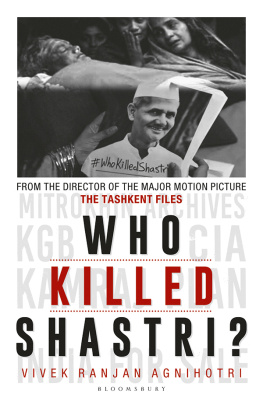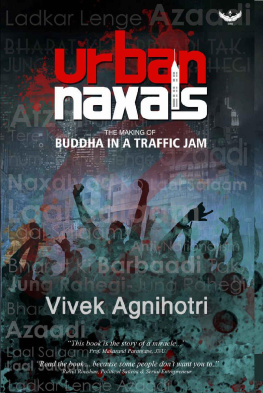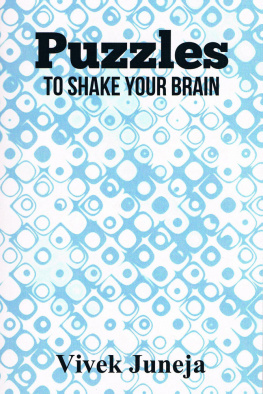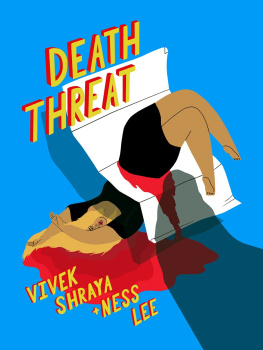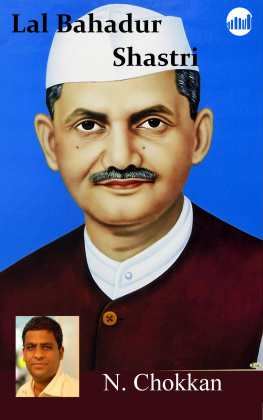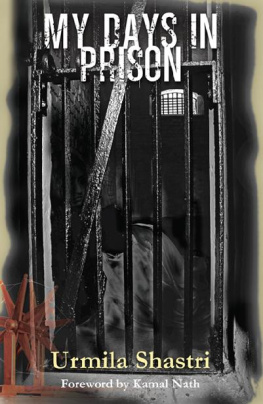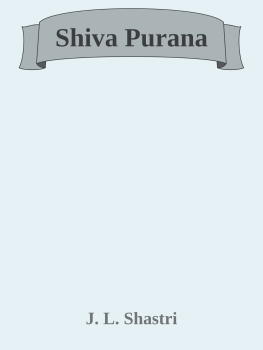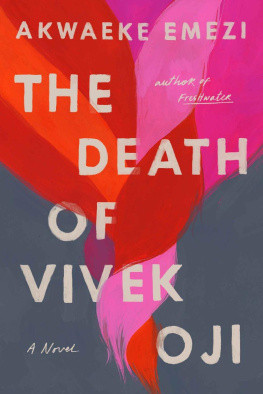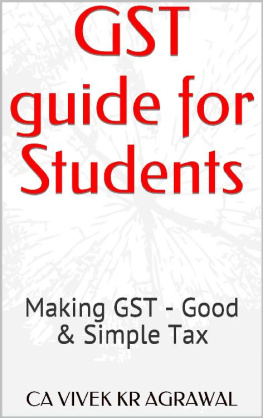Vivek Agnihotri - Who Killed Shastri?
Here you can read online Vivek Agnihotri - Who Killed Shastri? full text of the book (entire story) in english for free. Download pdf and epub, get meaning, cover and reviews about this ebook. publisher: Bloomsbury Publishing, genre: Politics. Description of the work, (preface) as well as reviews are available. Best literature library LitArk.com created for fans of good reading and offers a wide selection of genres:
Romance novel
Science fiction
Adventure
Detective
Science
History
Home and family
Prose
Art
Politics
Computer
Non-fiction
Religion
Business
Children
Humor
Choose a favorite category and find really read worthwhile books. Enjoy immersion in the world of imagination, feel the emotions of the characters or learn something new for yourself, make an fascinating discovery.
- Book:Who Killed Shastri?
- Author:
- Publisher:Bloomsbury Publishing
- Genre:
- Rating:3 / 5
- Favourites:Add to favourites
- Your mark:
- 60
- 1
- 2
- 3
- 4
- 5
Who Killed Shastri?: summary, description and annotation
We offer to read an annotation, description, summary or preface (depends on what the author of the book "Who Killed Shastri?" wrote himself). If you haven't found the necessary information about the book — write in the comments, we will try to find it.
Who Killed Shastri? — read online for free the complete book (whole text) full work
Below is the text of the book, divided by pages. System saving the place of the last page read, allows you to conveniently read the book "Who Killed Shastri?" online for free, without having to search again every time where you left off. Put a bookmark, and you can go to the page where you finished reading at any time.
Font size:
Interval:
Bookmark:

WHO KILLED SHASTRI?
WHO KILLED SHASTRI?
The Tashkent Files
Vivek Ranjan Agnihotri

BLOOMSBURY INDIA
Bloomsbury Publishing India Pvt. Ltd
Second Floor, LSC Building No. 4, DDA Complex, Pocket C 6 & 7,
Vasant Kunj New Delhi 110070
BLOOMSBURY, BLOOMSBURY INDIA and the Diana logo are trademarks of
Bloomsbury Publishing Plc
This edition published 2020
Copyright Vivek Ranjan Agnihotri 2020
Vivek Ranjan Agnihotri has asserted his right under the Indian Copyright Act to be identified as the Author of this work
All rights reserved. No part of this publication may be reproduced or transmitted in any form or by any means, electronic or mechanical, including photocopying, recording or any information storage or retrieval system, without the prior permission in writing from the publishers
Bloomsbury Publishing Plc does not have any control over, or responsibility for, any third-party websites referred to or in this book. All internet addresses given in this book were correct at the time of going to press. The author and publisher regret any inconvenience caused if addresses have changed or sites have ceased to exist, but can accept no responsibility for any such changes
ISBN: HB: 978-9-3886-3059-7; eBook: 978-9-3886-3061-0
2 4 6 8 10 9 7 5 3 1
Created by Manipal Digital Systems
Bloomsbury Publishing Plc makes every effort to ensure that the papers used in the manufacture of our books are natural, recyclable products made from wood grown in well-managed forests. Our manufacturing processes conform to the environmental regulations of the country of origin.
To find out more about our authors and books visit www.bloomsbury.com and sign up for our newsletters
CONTENTS
In life, sometimes, magic happens.
This book is the outcome of that magic.
A simple tweet, remembering Indias second prime minister on his birth anniversary, triggered a journey that helped me discover myself. My purpose. My truth.
As you will discover in the book, an invisible force guided me to chase the truth of Lal Bahadur Shastris mysterious death in Tashkent. A simple curiosity led to mammoth research, spread over four years. When I reached a dead end, a desperate call for crowd research resulted in thousands of people collaborating with me to discover the truth. When the film, The Tashkent Files, ran for 100 days in theatres, despite all odds, it was the success of all those unknown people who had inspired, helped and collaborated with me in this journey. I thank all of them.
We are not professional researchers. Like citizen journalists, you can call us citizen investigators. When we had started, all we wanted to know was what had happened on the night of Shastris death. By the time we had finished, we had time-travelled from Indias ugly defeat to China in 1962, to the ugly Emergency in 1975. Why was there no place for a rooted leader like Shastri in either Nehrus India or Indiras India? Was India for sale? Who sold it? Is that why Shastri was eliminated? Thats why it became critical for me to present that ugly period of Indian politics, which may have been the reason behind the mystery of Shastris death. This may not be the truth but it can help you probe further. Now, its for you to discover your own truth.
As I said earlier, we are not professional researchers. We studied whatever materialarticles, news reports, documentaries, books, parliament records, primary interviews, informal chats, RTIs, etc.we could find. We even turned whistle-blowers. I had no idea then that someday, I will be compiling all the main research to write this book. If I had known, I would have done better housekeeping with all the well-marked references. Also, another problem I faced was that a lot of articles quote another article which quotes another article which quotes a book that quotes another book. This makes it almost impossible to find out the original source. This could be because nobody took interest in Shastris death; hence, there is no definite work. Though I have compiled a list of all sources at the end of the book, if I have missed out on any credit for quoted passages, I very sincerely apologise. Its not intentional. I thank all those whose material we have used for our research. I thank Anuj Dhar for his help in accessing the research material including the parliamentary records.
I dont know if we will ever know the truth of Shastris mysterious death. But one thing is for certain that in independent India, we, the citizens, have no #RightToTruth. This book is an attempt to take you closer to the truth.
This book has reaffirmed my belief that the impossible takes time, but one should keep hope. For, in the end, Satyamev Jayate.
I must thank my editors, Shreya, Praveen and Megha, for being so patient and supportive. I thank all the wonderful people at Bloomsbury.
I thank the Shastri family, especially Mahima Shastri, Mandira Shastri and Sanjay Nath Singh, without whose insights this book would have been incomplete. I thank Tripti Sharma who selflessly doctored my line of thinking with high standards of quality control. I also thank Dimple Kaul for being a soul-sister in my journey.
I remember Kuldip Nayar who, just a few months before his death, chose me to disclose all the secrets he never wrote about or spoke.
I was lucky to have three guiding lights in this journeymy fathers diary, my wife Pallavi and my assistant Saurabh Docsaab. They not only brought different perspectives and understanding, but they also became my R&D lab for self-discovery. My fathers voice helped me whenever I was confused with my lifes purpose. Pallavis earthy honesty became my source of courage. Docsaab helped me connect with my youth, my roots.
There are hundreds of people who have contributed in many ways. I thank all of them.
In the end, I thank the Divine who chose me as a medium to tell this tale.
T ruth is not always a wonderful thing. Truth can lead to a divorce. Truth instigates wars. Truth can divide countries. Truth can also kill. Truth, indeed, is a deadly thing.
It was 2 October. Gandhis birthday. The man who lived for truth. And died for truth. His truth got us freedom. His truth, also, divided us.
Like every year, I wanted to tweet on Gandhi.
How about a quote from The Story of My Experiments with Truth?
When I was 14, my father had gifted me a copy of Gandhis autobiography. It must be somewhere in my library. In fact, I have two copies. One I had won in an elocution contest at Sevagram, near Wardha, where Gandhi had once made his ashram, a home to Harijans and many freedom fighters. My father was one of them. After his Namak Andolan Padyatra in 1930 from Sabarmati Ashram in Gujarat, Gandhi decided not to return to Sabarmati till India had achieved swaraj (freedom). In 1936, he established his new ashram, spread across 300 acres of land, donated by the industrialist Jamnalal Bajaj. The barren land became Sevagram Ashram, about seven to eight kilometres away from Wardha, where Gandhi stayed until his death in Delhi in 1948.
Besides a woollen shawl, a coconut, some books on GandhiThe Story of My Experiments with Truth being one of themand a trophy, I was also awarded the princely sum of 1,000. That felt like a million bucks. On my way back, via Nagpur, I bought my father a diary.
Anyone not born in the 1960s/1970s will not understand the importance of a personal diary. Well, think about a day without your mobile phone. The devices may be different, but the intensity of attachment and possession is the same.
Next pageFont size:
Interval:
Bookmark:
Similar books «Who Killed Shastri?»
Look at similar books to Who Killed Shastri?. We have selected literature similar in name and meaning in the hope of providing readers with more options to find new, interesting, not yet read works.
Discussion, reviews of the book Who Killed Shastri? and just readers' own opinions. Leave your comments, write what you think about the work, its meaning or the main characters. Specify what exactly you liked and what you didn't like, and why you think so.

